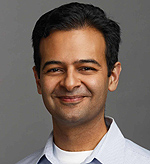October 21, 2012 - By Erin Digitale
BY ERIN DIGITALE

Arash Anoshiravani
Online health records could be surprisingly useful for at-risk teenagers who cycle through the juvenile justice system. A new study from the Stanford University School of Medicine and the Santa Clara Valley Medical Center found that these young people have high rates of Internet use and an unexpectedly favorable attitude toward accessing their health records online.
Teens who get in trouble with the law could particularly benefit from online health records because they generally have worse health than other adolescents — and no one keeping track of the health care they do receive. These teens’ health problems range from spotty immunization histories to chronic diseases such as asthma, sexually transmitted infections, mental illnesses and substance abuse. And not only do poverty, difficult relationships with their parents and frequent moves make it hard for them to get consistent health care, these problems also increase the chances that doctors who are treating them will not have access to their medical histories.
No one knows if using online health records would be feasible or desirable for this group. The new study, published online Oct. 22 in Pediatrics, shows that such an approach has great promise, despite skepticism among some providers that this population is not inclined to avail itself of online resources.
“These young people are marginalized, considered delinquent,” said the study’s senior author, Arash Anoshiravani, MD. “They’re often not considered when it comes to new ways of engaging patients.” Anoshiravani is an adolescent medicine specialist at Lucile Packard Children’s Hospital, a clinical assistant professor of adolescent medicine at Stanford and the medical director of the Santa Clara County Juvenile Custody Institutions.
Anoshiravani's team conducted in-person interviews with 79 incarcerated teens who received treatment at the Santa Clara Valley Medical Center. The researchers wanted to know whether these youth had the resources and inclination to use online health records outside of juvenile hall. (They do not have Internet access while detained.)
The teens had similar rates of Internet use to the general adolescent population, with 87 percent saying they used the Internet at least once per week when not detained. Home computers and cell phones were their most common tools for accessing the Internet, the study found. The finding contradicts older research demonstrating a “digital divide” of low Internet use in poorly educated and impoverished groups.
“Things have shifted; the digital divide still exists between older individuals of different backgrounds, but among adolescents there is a high rate of tech access, even for the most underserved,” said Gregory Gaskin, a Stanford medical student who is the first author of the paper.
The U. S. health-care system is gradually replacing paper charts with computerized electronic medical records, and some providers are beginning to allow patients to access portions of the records online. The researchers wondered whether this target group of teenagers would be interested in seeing their health information on the Web.
The teens were enthusiastic about the option, with 90 percent saying it would be useful to have their health information automatically put online so they could access it later.
“I didn’t expect this level of interest because they don’t typically think of health as something that’s part of their daily lives,” Anoshiravani said, adding that these teens engage in risky behaviors that make them seem cavalier about their health.
These teens’ need for reliable and accessible health records is made even more urgent because they often do not have family members overseeing health-related chores, such as tracking immunizations and medications, checking lab results or recording their medical history. The lack of records is a problem not just in the short term but also when these teens reach adulthood, especially for those who survived serious medical events in childhood. “They may turn 18 and not know they were born with a heart defect that was surgically repaired,” Anoshiravani said.
Contrast that situation to a typical teenager. “A parent or grandparent is going with them to the doctor and keeping their health records,” Anoshiravani said, noting that troubled teens don’t have that help. And it’s not realistic to expect these teens to keep a hard copy of their medical file. “Carrying around pieces of paper that they could lose did not make sense to them, but having a place to check this information online did make a lot of sense,” he added.
The researchers were surprised to find that the teenagers would also share online health records: The vast majority of the respondents were willing to share their records with doctors and half said they would want to share the information with their parents.
The next step, Anoshiravani said, is to implement and test online health records for at-risk teens. The biggest challenge will revolve around the issue of information-sharing, since minors’ parents are entitled to see some parts of their health records, while other types of records cannot be shared with parents without the patients’ consent.
“It’s very difficult right now to meet the spirit and letter of the law around confidential health information in the areas of reproductive and mental health for adolescent patients,” Anoshiravani said. As electronic medical records evolve to include customized privacy settings, it will be easier to meet teens’ confidentiality needs, he said.
Anoshiravani and Gaskin collaborated with Christopher Longhurst, MD, who is a clinical associate professor of pediatrics in systems medicine and in general pediatrics at Stanford, and a pediatric hospitalist at Packard Children’s. Information about the Department of Pediatrics, which helped to support the study, is available at http://pediatrics.stanford.edu/.
About Stanford Medicine
Stanford Medicine is an integrated academic health system comprising the Stanford School of Medicine and adult and pediatric health care delivery systems. Together, they harness the full potential of biomedicine through collaborative research, education and clinical care for patients. For more information, please visit med.stanford.edu.